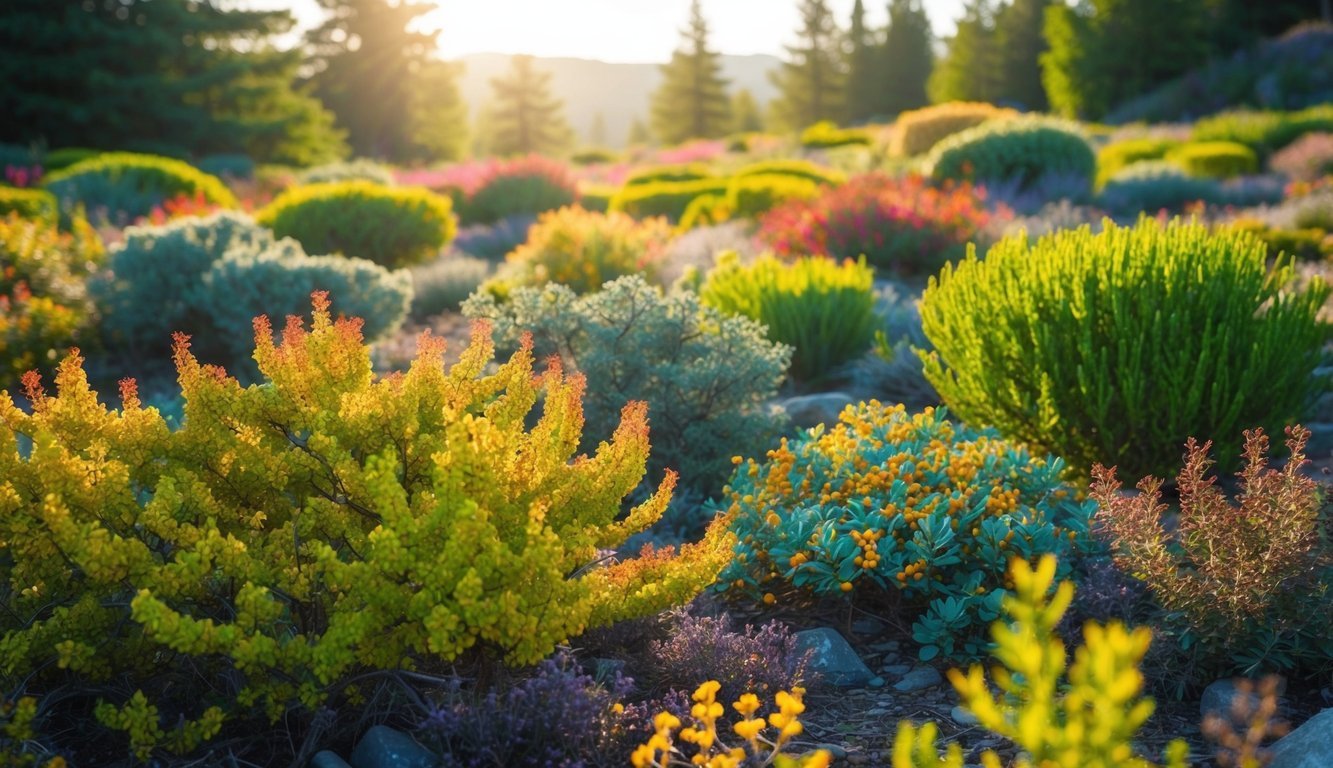
When it comes to landscape design, homeowners and gardeners have a wealth of choices that not only enhance visual appeal but also support local wildlife.
Among these choices, boxwood (Buxus spp. and varieties, Zones 4–9) has long been a favorite, recognized as one of the most popular evergreen shrubs across much of the United States and various regions in the northern hemisphere.
In fact, sales data from 2019 shows that nearly 11 million boxwood shrubs were sold, raking in around $126 million for nurseries.
Given this impressive use of boxwood in both residential and urban settings, it’s time to assess whether it should still be our go-to option.
With growing recognition of the importance of native plants to our ecosystems, the idea of turning to native evergreen shrubs as alternatives to boxwood is becoming increasingly attractive.
Despite boxwood’s popularity, its limited ecological contributions make it less suitable for all gardens.
Boxwood Characteristics and Challenges
Boxwood’s charm lies in its variety of shapes, evergreen foliage, and tolerance for heavy pruning, which makes it a preferred choice for establishing hedges and foundational plantings.
However, it is not without its weaknesses.
The biggest threat to these beloved shrubs is boxwood blight—a disease caused by the fungus Calonectria pseudonaviculata (CPS)—which has been documented in over 30 states, endangering a significant portion of the nation’s boxwood population.
Beyond blight, boxwood shrubs may also contend with issues like powdery mildew, leaf spot, root diebacks, and winter burn, particularly in colder climates where evergreen plants are valued during the winter months.
Alternatives to Boxwood
To provide you with robust alternatives to boxwood, we have curated a list of native shrubs, organized by size.
The smaller shrubs, standing at 3 feet or less, serve well for low hedges, foundational plantings, or as standout accents.
In contrast, the larger options, exceeding 3 feet, work perfectly for tall hedges, privacy screens, or boundary plantings that enhance your outdoor space while benefiting nearby wildlife.
SMALL SHRUBS: 3 FEET AND UNDER
- Kalm’s St. John’s Wort (Hypericum kalmianum) – Zones: 4–8, Growth: 2 to 3 feet tall and wide, Environment: Thrives in full sun; prefers well-drained soils, from dry to moist, Native Region: Northeastern U.S. and southeastern Canada
- ‘Abbott’s Pygmy’ Dwarf Canadian Hemlock (Tsuga canadensis ‘Abbott’s Pygmy’) – Zones: 4 to 8, Growth: 12 to 18 inches tall and wide, Environment: Prefers part to full shade; requires average well-drained soil, Native Region: Northeastern U.S. and southeastern Canada
- Creeping Oregon Grape (Mahonia repens) – Zones: 5–8, Growth: 1 to 2 feet tall, spreading up to 3 feet wide, Environment: Grows well in partial shade to full sun; prefers well-drained soils, from dry to medium moisture, Native Region: Western U.S. and Canada
- ‘Don’s Dwarf’ Wax Myrtle (Morella cerifera ‘Don’s Dwarf’) – Zones: 7–10, Growth: 3 to 4 feet tall and 4 to 5 feet wide, Environment: Thrives in full sun to partial shade; fit for average to moist soil, Native Region: Southeastern U.S.
LARGER SHRUBS: OVER 3 FEET
- Curl-Leaf Mountain Mahogany (Cercocarpus ledifolius) – Zones: 4 to 10, Growth: Up to 15 feet tall and 8 feet wide, Environment: Prefers full sun and well-drained soil, Native Region: Western U.S. and Baja California
- Evergreen Huckleberry (Vaccinium ovatum) – Zones: 6 to 9, Growth: 6 to 8 feet tall and wide, Environment: Does well in partial shade to full sun; requires acidic, well-drained, moist soil, Native Region: Coastal regions from California to British Columbia
- Coastal Leucothoe (Leucothoe axillaris) – Zones: 5 to 9, Growth: 3 to 6 feet tall and wide, Environment: Thrives in partial to full shade; prefers average soils, Native Region: Eastern U.S.
- ‘Shamrock’ Inkberry (Ilex glabra ‘Shamrock’) – Zones: 4 to 9, Growth: 3 to 5 feet tall and wide, Environment: Grows best in full sun to partial shade; prefers average to moist, acidic soils, Native Region: Eastern and south-central U.S.
- California Coffeeberry (Frangula californica) – Zones: 7 to 10, Growth: 6 to 12 feet tall and wide, Environment: Prefers full sun to partial shade; thrives in well-drained soils, Native Region: Southwestern U.S., Oregon, California, and northwestern Mexico
By opting for these native shrubs over boxwood, you can create a beautiful landscape that supports the local ecosystem, providing benefits for both your garden and the wildlife who call it home.
Source: Finegardening

